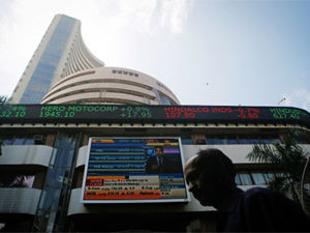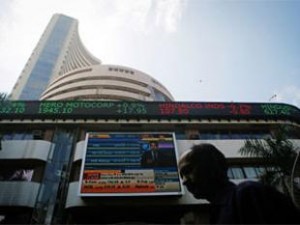
 MUMBAI: Investors have had a harrowing time this year because of the violent fluctuations in the markets, due to both global and domestic macro-economic uncertainties. In order to put a number to this, look no further than India’s VIX, a gauge of market volatility. It’s trading near 25, much higher than its 2012 average of 15.
MUMBAI: Investors have had a harrowing time this year because of the violent fluctuations in the markets, due to both global and domestic macro-economic uncertainties. In order to put a number to this, look no further than India’s VIX, a gauge of market volatility. It’s trading near 25, much higher than its 2012 average of 15.
The benchmark BSE Sensex plunged 6-8% on five occasions this year and shot up by 5-10% seven times over the same period, traversing a range of more than 2,500 points.
“It’s getting extremely difficult to trade in markets like these, where both international and domestic events are influencing enormously,” said Jitendra Panda, business head, broking, at Capital First, promoted by Warburg Pincus Group.
“Investors these days are only investing with a short-term horizon due to market volatility, and there is no concept of long-term investment.””The markets have become a rollercoaster ride,” Panda said. “Thus it has become important for investors to know how to ride it. We are generally advising investors to buy even in small rallies and sell on market declines, with tailor-made strategies from the derivatives segment.”
The Sensex hit its highest level of 20,646 this year on Thursday, having sunk to a low of 17,905 on August 21. That’s a surge of nearly 15%.
The talk of tapering by the US Federal Reserve that began in May exacerbated volatility across all emerging markets, including India.
The rupee’s free fall to 68.83 against the dollar from 54 levels, and its recovery to 61 levels led to wide fluctuations in interest rate-sensitive sectors such as banking, real estate, and auto.
Foreign fund outflows of $4 billion between June and August, and then inflows of $1.7 billion in September also contributed to volatility.
The economic gloom fed this uncertainty, with leading brokerage houses such as CLSA forecasting economic growth at 4.2% in the current fiscal year. Apart from this, rising concerns over the widening fiscal and current account deficits due to rising global commodity prices and the depreciating rupee added to volatility.
The banking and financial sector, which has nearly 30% weightage in the Nifty, is the most volatile this year. The BSE Bankex has fallen nearly 15% on three occasions, and has risen about 20% on two occasions this year.
The index has fallen 35% from its high of 15,214 on May 15 to 9,871 on September 3, before recovering 23% this month to 12,166.
The BSE Bankex has witnessed its most volatile sessions this year in the last two months. The index was down nearly 5% on four occasions, and up 5% three times. Fund managers, in order to safeguard against market volatility, are avoiding interest rate-sensitive sectors.
“The fund houses are avoiding volatile stocks — sectors such as interest rate sensitives and infrastructure stocks. Mostly funds are overweight on defensive sectors like technology, pharmaceuticals, and FMCG where volatility is low,” said Akshay Gupta, managing director and chief executive officer at Peerless Mutual Fund.
“To avoid market volatility, funds have increased cash component in their portfolios, and have churned sectors by increasing or decreasing the weightage, and not benchmarking against the indices,” he added Another rate-sensitive sector, the auto sector, witnessed the BSE Auto Index falling 8-10% four times this year, and rising 10% twice.
As I website possessor I believe the content material here is rattling excellent , appreciate it for your hard work. You should keep it up forever! Best of luck.